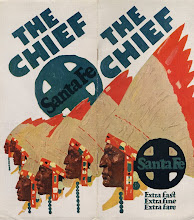On that occasion, the students had the opportunity to chat with curator Sarah Schleuning, exhibition designer Richard Miltner, and the library staff to hear about the special challenges posed by storing and presenting small ephemeral items such as postcards to the public in a novel and exciting manner. Some of the ideas that had floated around at that time ranged from the digital projection of postcard images in galleries and public spaces; the possibility of creating narrow galleries in which small format postcards would not get lost; creating storage facilities to protect the fragile paper items from windstorm and water damage in a hurricane flood zone; and the pros and cons of employing natural and artificial light down here in sunny South Florida.
Friday, April 16, 2010
POSTCARDS FROM THE EDGE
IMAGINING A DAY WHEN THE WOLFSONIAN MIGHT EXPAND ITS WASHINGTON AVENUE BLUEPRINT TO THE SIDE, SCHOOL OF ARCHITECTURE STUDENTS AT FLORIDA INTERNATIONAL UNIVERSITY CREATE DESIGNS FOR A POSTCARD MUSEUM
This Wednesday, Wolfsonian Special Projects Co-ordinator Regina Bailey and I drove out to the Paul L Cejas School of Architecture building on the Modesto Maidique Campus of Florida International University. We had been invited by Claudia Busch to sit in on Design 4, a professional and peer review session where those students were making their final presentations for designs for a postcard museum to occupy the site adjacent to the Wolfsonian. The students and their professors had come to the Wolfsonian library some months earlier with the aim of learning about the special needs and requirements of an institution dedicated exclusively to the preservation, study, and exhibition of the postcard. (See my blog dated Friday, January 8, 2010).
Regina and I were eager to see the projects that the students had come up with for meeting these challenges. Professors Eric Peterson, Elite Kedan, and Erik Sundquist had converted eight classrooms on three floors of the School of Architecture building into studios for the review session. Although we did not have the chance to listen to each and every one of the student presentations, we did have the privilege of listening in on the critiques provided by Jon Stuart, David Rifkind, and other reviewers, and to enter all eight studios to view the design drawings and three dimensional models created by the students. Here is just a small sampling of what we saw.
Subscribe to:
Post Comments (Atom)






No comments:
Post a Comment